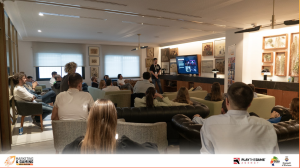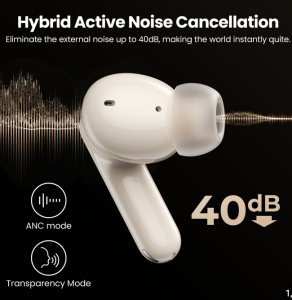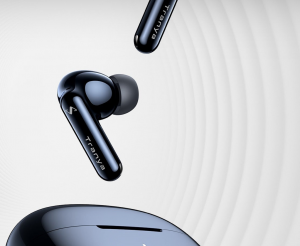Hi, Rhea, welcome to Mob76 Outlook and its readers
It’s a pleasure to be here, thanks for inviting me.
Let’s go straight in. Do you think we have hit a tipping point with climate change?
Yes. We are at a tipping point, in both good and bad ways.
2023 is the hottest year in human history. In September 2023, the temperature was roughly 1.75° warmer compared to the pre-industrial period. That means we have officially missed our goal for the first time. Although we can’t say we are completely doomed, the situation is very urgent.
If we look at this concept ‘carbon budgets’, it refers to the total amount of carbon dioxide emissions that can be released into the atmosphere while still limiting global warming to a specific target, such as 1.5°, each passing year of delayed action reduces the available carbon budget and increases the difficulty of achieving long-term climate goals. Tragically, the clock is really ticking.
On the other hand, we have seen some positive signs that our decades of efforts are starting to see some resutls. For example, for the first time in history, we have seen clean energy investment surpassing the investment into oil production, this year, 2023. We have seen more young people speak up about their concern on this topic, the issue has received a lot of attention compared to before.
However, the speed of global warming hasn’t slowed down. We have more to do but we don’t have much time. We are at a juncture now. Our future depends on our choice today.
Please explain to our readers what you mean by your term ‘passive activism’?
This is an interesting term, how can you be an activist but at the same time being passive? It sounds contradictory but actually not. “Activism” here means as long as you care about this issue, you want it to be solved, you are one of us, actively want the climate change issue to be solved. “Passive” here is the “how” you achieve this.
Have you heard about this word “climate anxiety?” I think we all have this symptom. We want the world to be better and want the climate challenge to be solved, but we don’t know how to get involved, what we can do, stop using plastic cups, seems so far away from contributing to reducing 52 billion tonnes of carbon emissions every year. We feel anxious we might not be able to do what climate activists require us to do, we might not be able to give up our life and family for the sake of our planet, although we know we all have the responsibility to save it. We are here to solve this problem.
At PlanetPlay, our mission is to allow anyone, anywhere, to easily take climate actions by doing what they are already doing. What we mean is if you need anything, buy it from PlanetPlay website, it will be at the same price, but we take part of the money to help fight climate change. How? By investing directly into those projects that can reduce CO2 emissions. You can track your impact made by your purchase, you are a “passive activist” here to help the planet.
For example, PlanetPlay starts with helping gamers achieve this, all the game purchases on the marketplace are directly funding our project in Kenya – the Hongera Clean Cookstove project, helping the local families live a better life and preserve the forests in Mount Kenya region.
What other climate change initiatives is PlanetPlay involved in?
PlanetPlay is actively involved in many climate related initiatives. Apart from Hongera Clean Cookstove project, we are also partnering with other amazing NGOs on initiatives that can clean up the environment, and also partnering with organizations like UNDP to understand young generations’ view on climate related topics, and inform the policy makers to make better decisions.
One of the core activities PlanetPlay does is to partner with game companies and creating in-game “green activations” together. For example, we create special in-game challenges that focus on spreading green messages to players, as well as special in-game assets that players can purchase, and part of the revenue can be donated directly to the green projects we do. There are more than 3 billion people in the world playing games, the power is massive here. By engaging with PlanetPlay, players can be “passive activists” on solving climate change issues easily.
Can you foresee a future where every global transaction contributes a micropayment towards climate change?
Yes and this seems natural to us. We are facing an issue that is at a scale that we have never seen before, and equally we need a solution at the same scale. If we want to engage everyone on this planet to join us on this journey, we believe allow everyone to become “passive activist” is the way.
McKinsey has done a study on how much we need to spend to transit the world economy to Net Zero, that could be used as a rough estimate to represent how much we need to solve the climate change problem.
The answer is an eye-watering price – 9 trillion dollars every year all the way till 2050. If you don’t really understand how much money is 9 trillion dollars, it is roughly 8% of the global yearly GDP. That is what we need. So we do see a future where every global transaction contributes a micropayment towards climate change, that perhaps is the most straightforward way to solve the problem.
All media such as TV and movies are ‘warming’ to featuring climate change. Why is the games industry more important?
Games are the media of today. It has already been bigger than the film and music industry combined for a few years. There are more than 3 billion people in the world nowadays playing games. What makes it more unique is games talk to young generations.
Before we call it “climate change”, it was called “global warming”. The issue has been around for more than 20 years. Climate change, eventually, will impact the young generation much more than our generation, if we don’t act fast enough now, so it is also not a surprise that young people are the ones at the front line of making changes.
However, we as human beings have seen drastic change in the past 20 years on technology, the way we live, the way we get information, the way we entertain ourselves… perhaps more than the last 50 years, thanks to the exponential growth of technology. So why do we expect young people to take the old method to fight climate change? We need a new method, the younger generation need a new method, and that is through games.
There was a lot of noise at COP28. What did you make of it?
It is complex, but also not unexpected. There is something achieved, for example the establishment of a loss and damage fund, and more financial support to private sector green investment, but I think it is not enough.
It will be interesting to see what happens next at countries’ level, as even though it is “historical” that the summit reached a kind of agreement where the majority of the countries accepting fossil fuels were the main climate problem, and agrees to “transit away” from it, but it does give countries freedom to “choose the path”.
I worry, this will again be the same story, the action and words will have a huge gap, when politicians are struggling balancing short term benefits and long term critical goals, they will eventually still choose the short term benefits. We have seen this too many times, and unfortunately history always repeats itself. That’s why I see it more as a wakening call, we need concrete action, if we really want to solve this problem, rather than just relying on words and talks.
Do you think we can still save the world?
Yes I remain positive on this question. One story I always tell people is to look back in the 80s how we solved the ozone layer depletion crisis. If you are a bit young you may not even know that once upon a time there was a big hole out there on our ozone layer. I see that as a testament to humanity’s capacity to act swiftly for a collective goal.
In 1987, the Montreal Protocol was signed, this international treaty aimed to phase out the production and consumption of ozone depleting substances, and the global response was rapid and decisive, with amendments strengthening the protocol over time. That has proved that we have the ability to solve a global crisis if we really put effort and actions in.
Although the climate crisis is a bigger and more complex issue, what it needs is no different. We are just lacking a way to engage both public and private sectors, to take actions together. So that is what PlanetPlay is focusing on, we envision a world where taking actions to fight climate change doesn’t have barriers, thus we can still save the world by doing it as fast as possible.
That was awesome, Rhea, a lot of food for thought. Thank you for sharing.
It was my pleasure. There is a lot of work to do and we’ve only just started.




